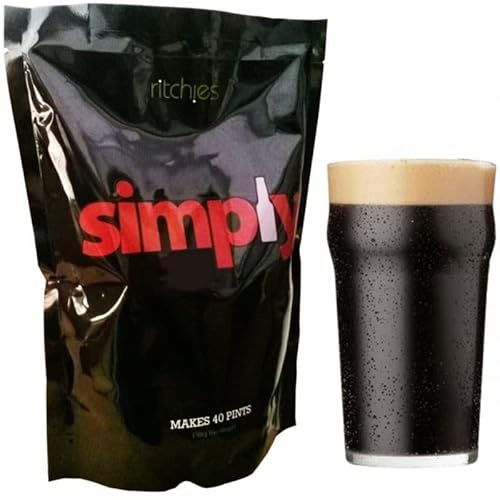nickjdavis
Regular.
- Joined
- Apr 11, 2019
- Messages
- 470
- Reaction score
- 634
@dreaddan
I wouldnt say that "PET are really that bad"...but my experience is that you do seem to get more bottle variation than with glass.
Yes 2+2+2 is as you describe....sometimes I let my beer sit for three weeks in the FV to let the yeast really clean up.
One of the techniques that I use to deliver flavour is to actually forego any sort of early bitterring boil addition and put all my hops in late...for example I brewed a beer where my hop additions (Godiva 6.7% AA) were 17g for 15 mins, 24g for 10mins, 34g for 5mins, 25g whirlpool for 20mins. The beer was full of hop flavours....i'm not saying this is the right way or the best way to get lots of hop flavour into a beer.....its just a methodology that works for me. that particular beer was relatively low IBU (20)....if you require higher bitterness then there is nothing to stop you using a clean bittering hop (something like Magnum for example) as a traditional 60 minute addition or by going even bigger with the late hop additions.
So using Tesco Ashbeck as a source you've still got a pretty mineral free water (even if the constitution has changed in recent years) and shouldnt require any acidification when used as sparge water...though I still question the need to add brewing salts to the sparge water (unless the salt additions are extreme and may affect your mash pH...but your additions are not what i would call extreme)....all you are really doing is rinsing the remaining sugars from the mash...as long as the sparge water isnt too hot then you should be OK, as long as your runnings are not dropping below 1.010 or drifting above 6pH....but the latter shouldnt happen with Ashbeck.
I do much the same with my malts....i don't have space to store 25kg sacks (and typically use three or four base matls depending on what I brew) so I buy what i need (crushed) for my next two or three brews....given that I brew roughly every three weeks it doesnt sit around too long once opened....if its lying around for 3 or 4 months then you might have an issue.
I dont think your bottling is weak...unless you are going to force carb in a keg and then counter-pressure fill then you have no other option....I bottle in exactly the same way as you...as long as you are using one of the "little bottler" style bottle fillers and filling from the bottom and can control the initial flow of the beer until the bottom inch or so of the bottler is covered then you shouldnt have a huge problem unless brewing super hoppy pale (APA/IPA) beers where it seems the slightest opportunity for Oxygen ingress can cause problems down the line.
By all means message me directly if you want to send me a beer for tasting.
I wouldnt say that "PET are really that bad"...but my experience is that you do seem to get more bottle variation than with glass.
Yes 2+2+2 is as you describe....sometimes I let my beer sit for three weeks in the FV to let the yeast really clean up.
One of the techniques that I use to deliver flavour is to actually forego any sort of early bitterring boil addition and put all my hops in late...for example I brewed a beer where my hop additions (Godiva 6.7% AA) were 17g for 15 mins, 24g for 10mins, 34g for 5mins, 25g whirlpool for 20mins. The beer was full of hop flavours....i'm not saying this is the right way or the best way to get lots of hop flavour into a beer.....its just a methodology that works for me. that particular beer was relatively low IBU (20)....if you require higher bitterness then there is nothing to stop you using a clean bittering hop (something like Magnum for example) as a traditional 60 minute addition or by going even bigger with the late hop additions.
So using Tesco Ashbeck as a source you've still got a pretty mineral free water (even if the constitution has changed in recent years) and shouldnt require any acidification when used as sparge water...though I still question the need to add brewing salts to the sparge water (unless the salt additions are extreme and may affect your mash pH...but your additions are not what i would call extreme)....all you are really doing is rinsing the remaining sugars from the mash...as long as the sparge water isnt too hot then you should be OK, as long as your runnings are not dropping below 1.010 or drifting above 6pH....but the latter shouldnt happen with Ashbeck.
I do much the same with my malts....i don't have space to store 25kg sacks (and typically use three or four base matls depending on what I brew) so I buy what i need (crushed) for my next two or three brews....given that I brew roughly every three weeks it doesnt sit around too long once opened....if its lying around for 3 or 4 months then you might have an issue.
I dont think your bottling is weak...unless you are going to force carb in a keg and then counter-pressure fill then you have no other option....I bottle in exactly the same way as you...as long as you are using one of the "little bottler" style bottle fillers and filling from the bottom and can control the initial flow of the beer until the bottom inch or so of the bottler is covered then you shouldnt have a huge problem unless brewing super hoppy pale (APA/IPA) beers where it seems the slightest opportunity for Oxygen ingress can cause problems down the line.
By all means message me directly if you want to send me a beer for tasting.








































